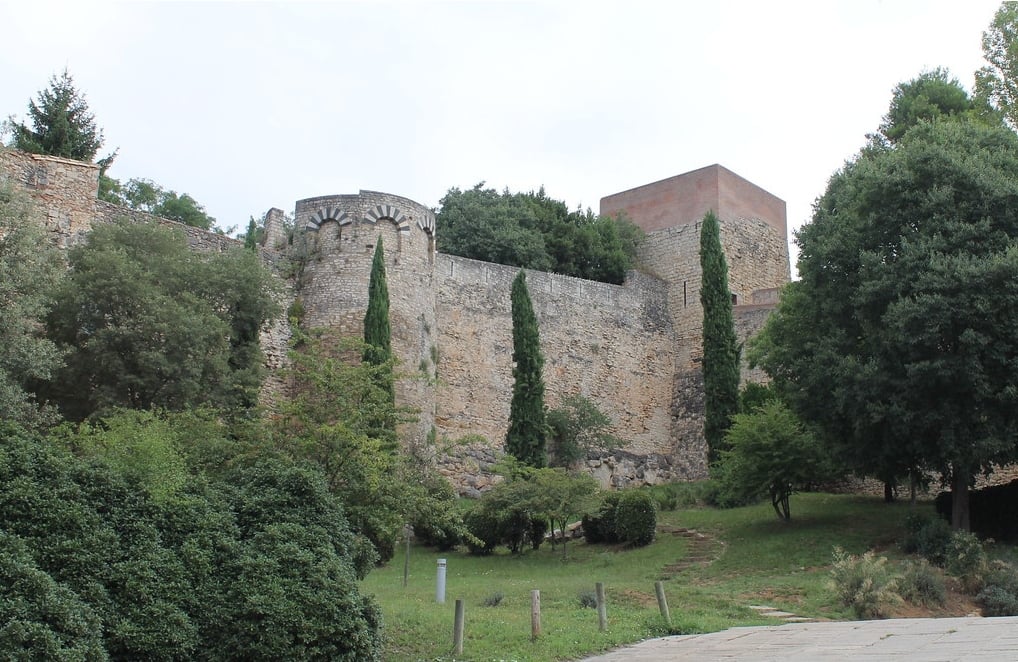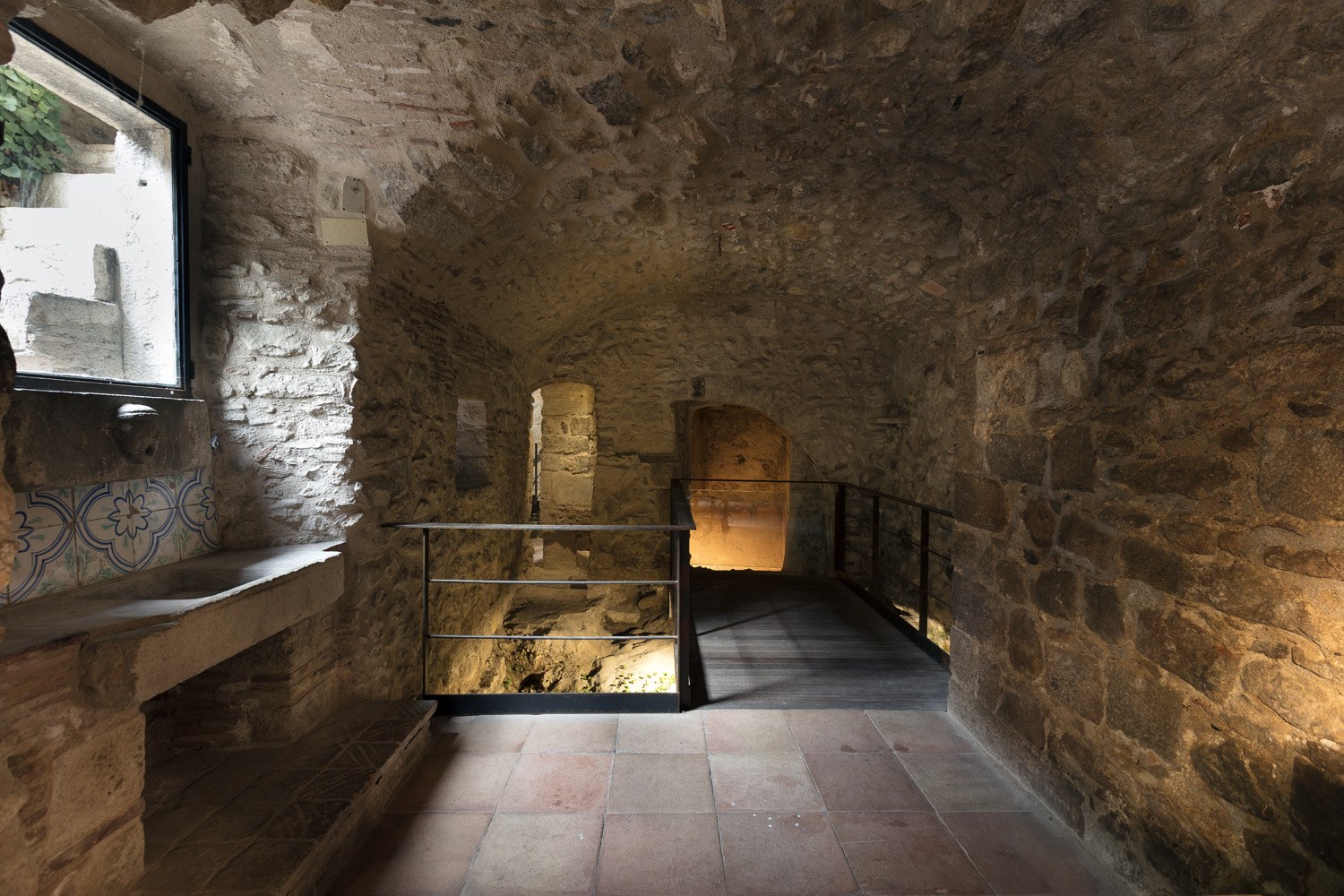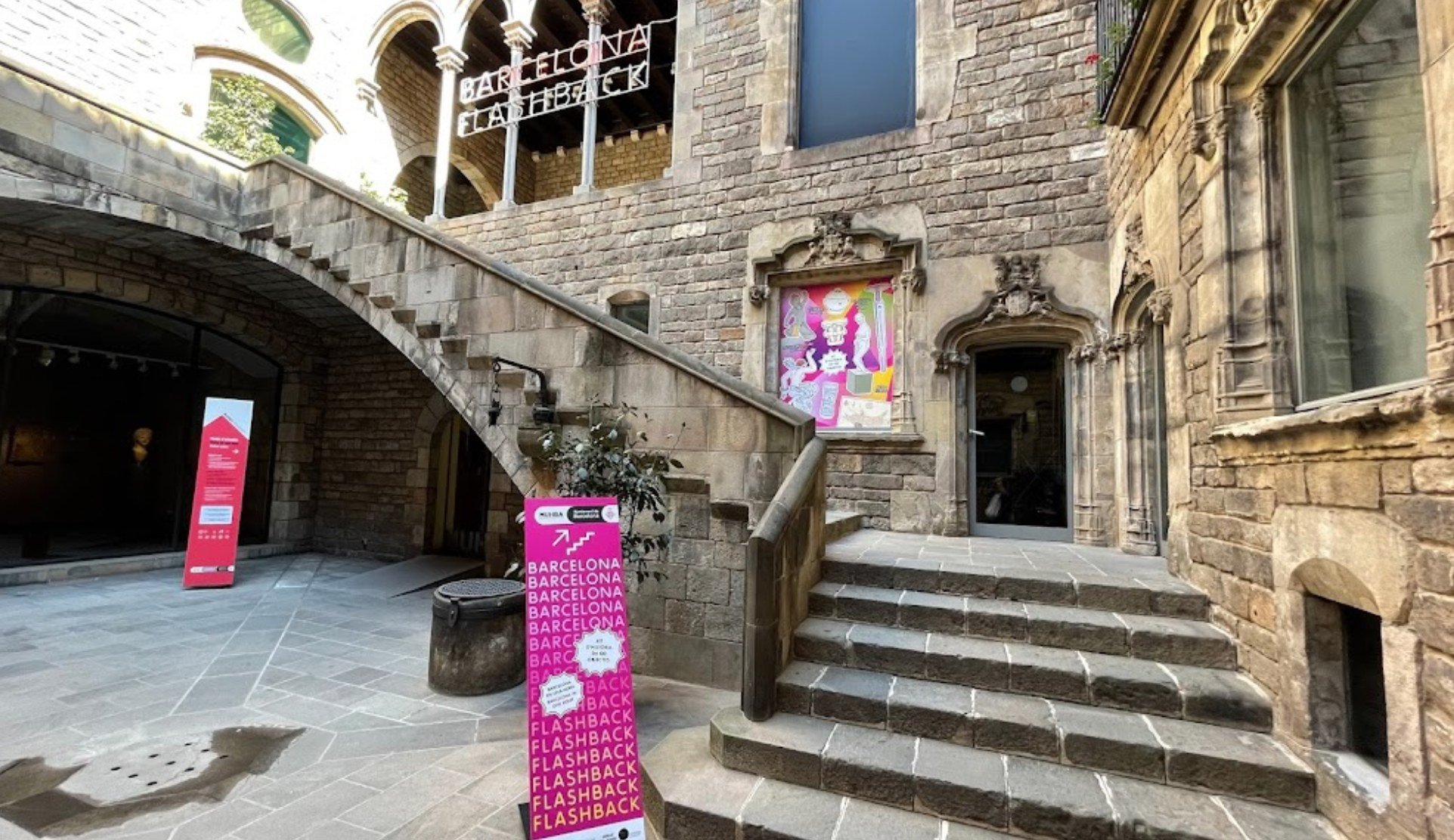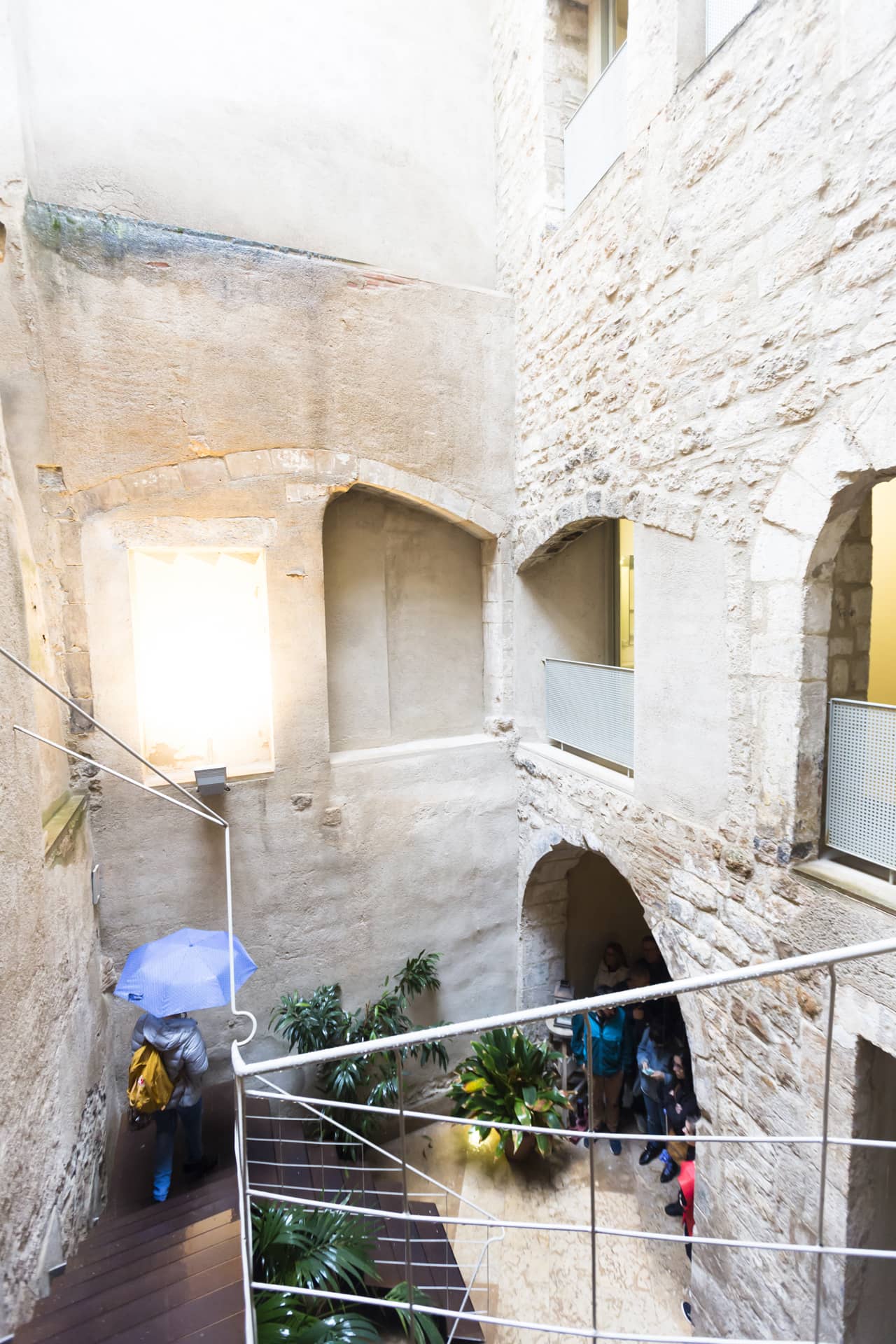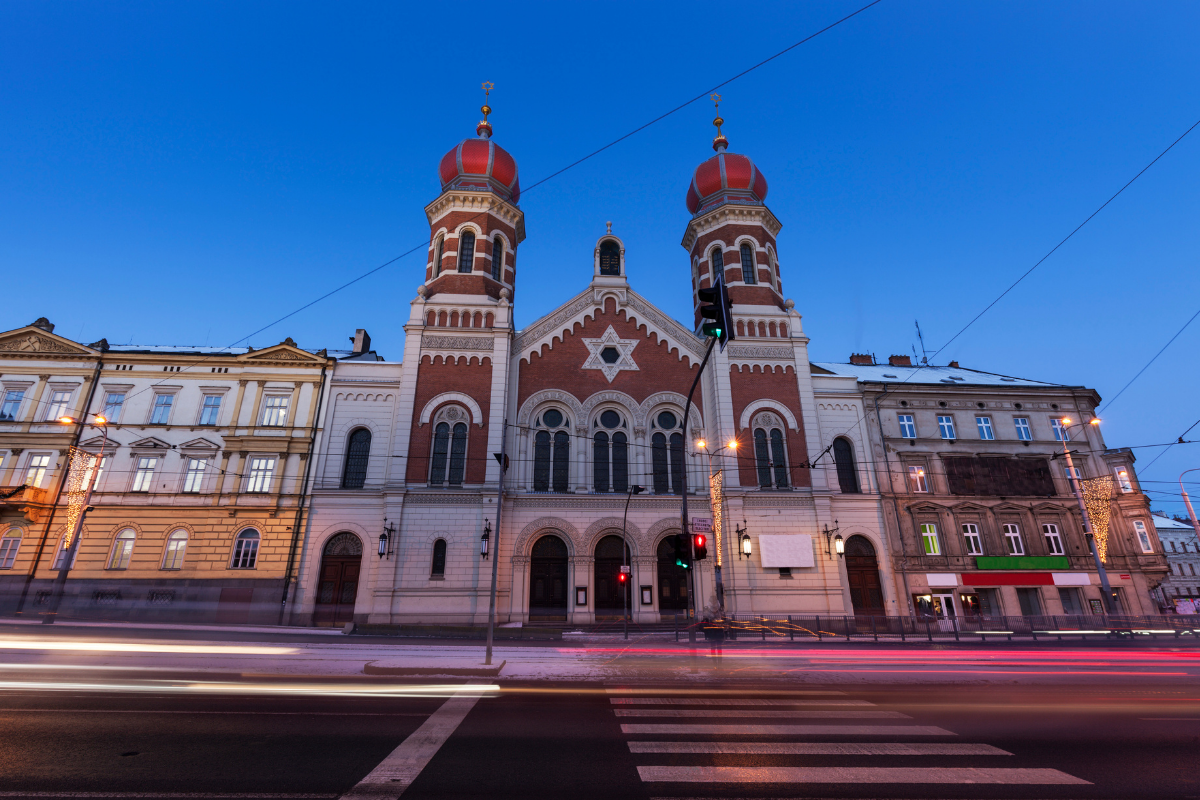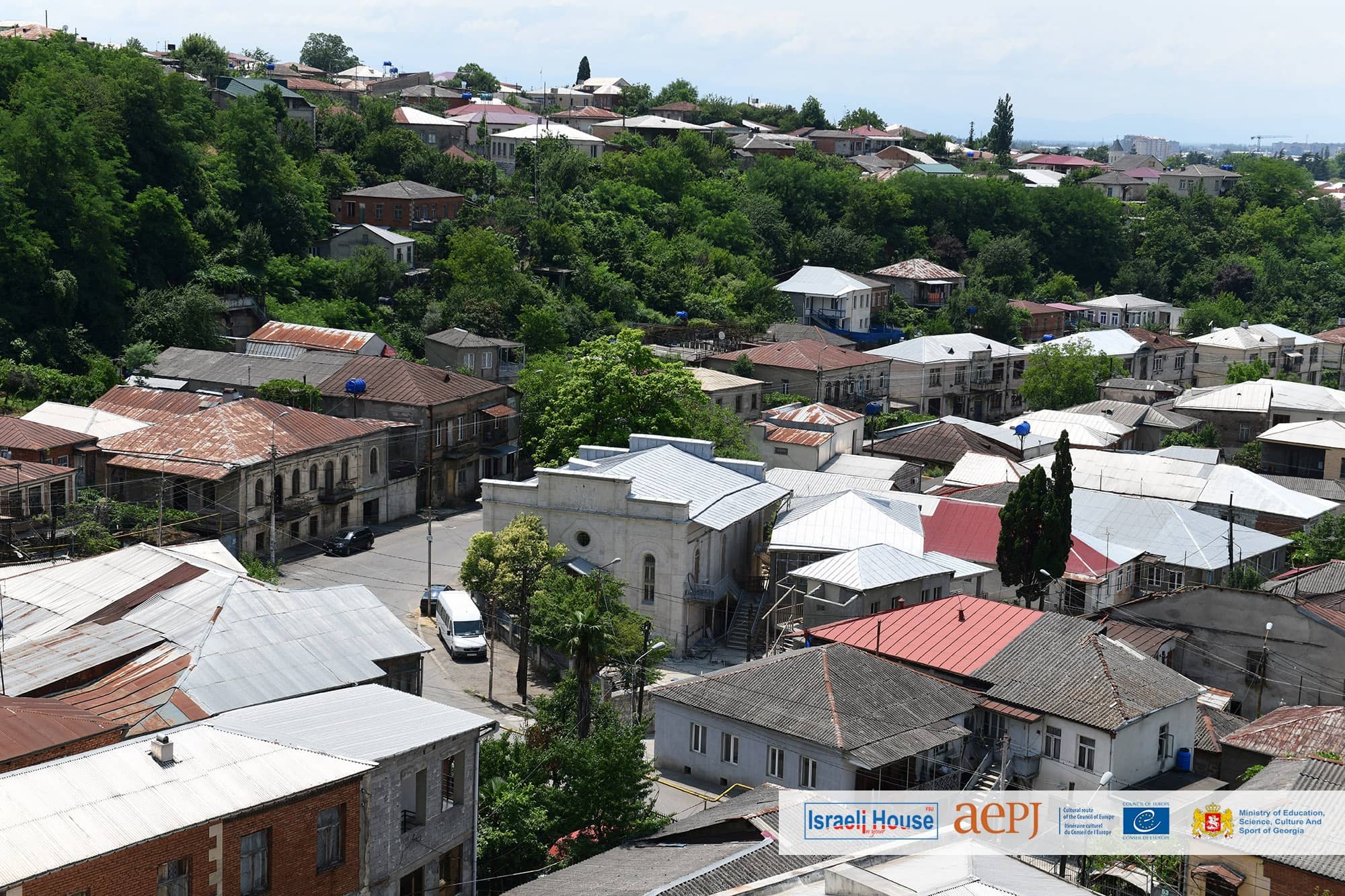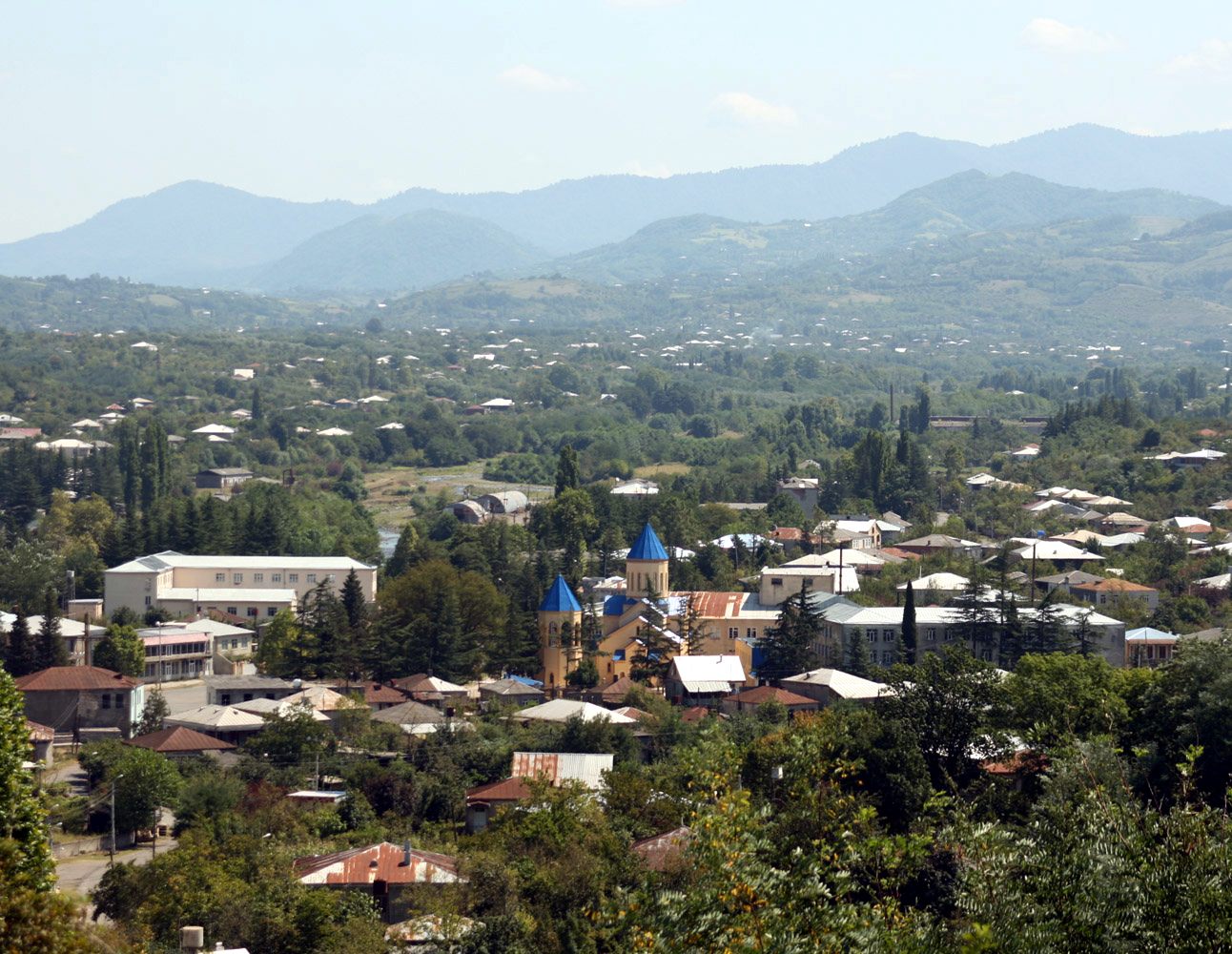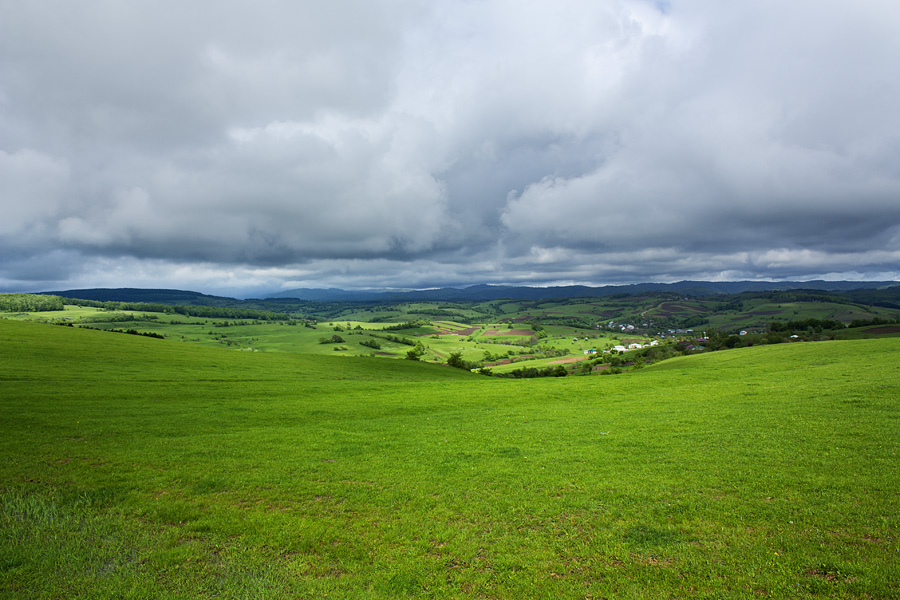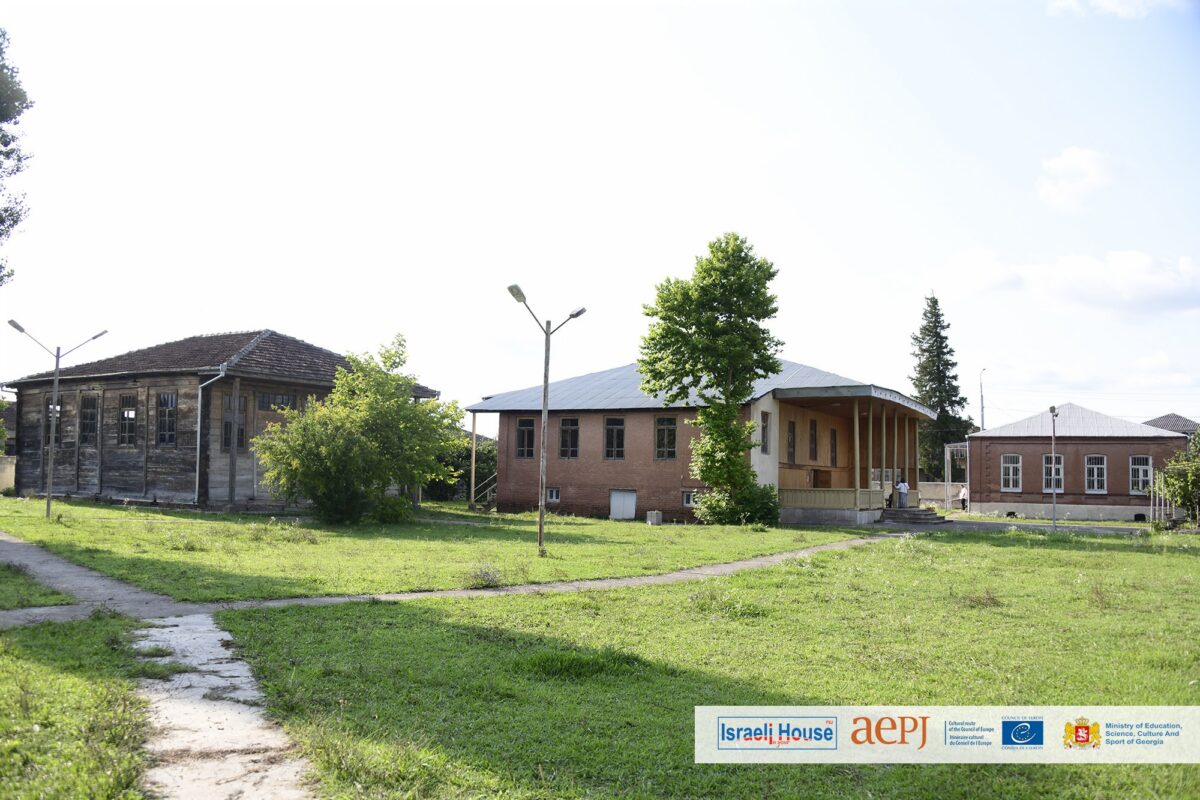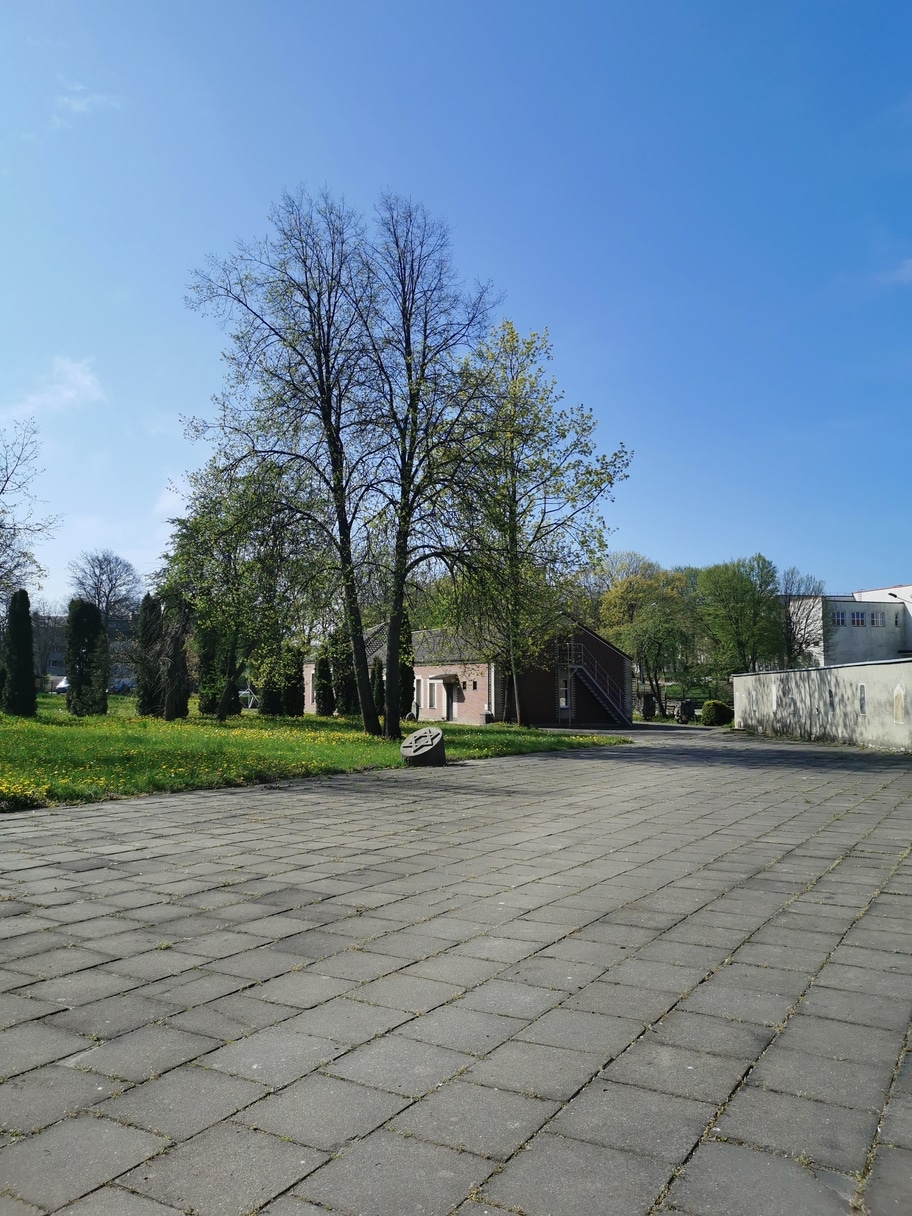Leaving behind the head of the cathedral, Alemanys street and Pere de Rocabertí¬ street lead to the former Caserna dels Alemanys, the site of an old military barrack today converted into a romantic garden amongst ruins and stretches of the wall. It is located on the highest point of the city and constitutes the vertex of the triangle where the former Roman Gerunda takes shape. It is in this complex where the Gironella Tower is situated, famous for serving as a refuge for Jews who were able to escape the slaughter and sacking of the of 1391.
Site Tag: Jewish Quarter
The Girona Mikveh
In 2014, the mikveh was identified in the patio of the Museum of Jewish History. The original structure has been preserved even though in later rebuildings it was transformed into a cistern. It was a closed space which could be accessed by a door, leading to a hall, a tiled changing room and the pool. Access was gained by stepping over the threshold, which led to a landing made of stone slabs, and from there people could probably go into the pool through a flight of stairs integrated in the pool, now lost. The water was supplied from a natural source by filtration, and also from the tank situated in the courtyard, which collected rainwater and filled the bath. The function of the mikveh is the spiritual purification through total immersion of the body in the water.
MUHBA El Call Jewish Quarter Museum
The headquarters of the Barcelona History Museum in the Call, inaugurated in March 2015, is located in the middle of the old Jewish quarter, where once stood the house of Jucef Bonhiac, a veil weaver. It is a building of medieval origin where original remains from the 13th and 14th centuries are preserved. The space of the Museum of History of Barcelona
El Call, distributed in three areas, aims to present the history and heritage of the the history and heritage of the Call in a global way. Area I explains the topography of the Call, area II explains the history of the Call and area III shows the cultural legacy of the Call.
Casa Adret
Casa Adret is one of the oldest habitable buildings in Barcelona. It is in the middle of “el Call”, the old Jewish quarter of Barcelona, where between the ninth century and fourteenth century, lived the Jews of Barcelona. Its last Jewish owner was called Astruc Adret, who was a Jew from Cervera and that he was the owner of this building in Barcelona. The exact date of construction of the house is not known, but it is probably from the early twelfth century.
Back in the day, the first floor was likely rented for some kind of craft or clothing workshop. The rest of the house was also rented to two Jewish families, something that is apparent thanks to the mezuzah holes that one can find in these two of the doors of the house. In Barcelona one can find 6 medieval mezuzah holes, two of which are in Casa Adret.
In 1391 a great pogrom took place in el Call, when denizens of Barcelona attacked the Jews who lived there. They were groups of local rioters who, following a tendency of the whole peninsula, entered el Call, beating and killing people, and destroying the neighborhood. Surviving Jews were forced to convert to Christianity, flee the country or die. In the case of Astruc Adret, he converted to Catholicism, changed his name to Lluís de Junyent and was forced to sell his properties, moving to the town of Falset. It is from this year, 1393, that we have the first document about this building. The document of forced sale of Lluis de Junyent to the merchant Miquel Marçal.
In the year 1428 there was a big earthquake in Barcelona. For that reason, the façade of Casa Adret and the building next to it are inclined towards each other, making the distance between the two extremely close in the upper levels.
From this point on little is known of what happens with this house, other than some of the uses it has had over time. During the 19th century there was a funeral parlor operating in the lower part of the house, called “La Palma”, along with a musical school.
In the 90’s the building, in a completely dilapidated state, was bought by Andreu Mas Colell, former Minister of Economy of the Generalitat, and Esther Zilberstein, his wife. In 2001 they commissioned two prestigious architects, Elias Torres and José Antonio Martinez Lapeña, to renovate the building. Since 2018 it has served as a Jewish cultural center and a hub for local Jewish organizations.
Pilsen Great Synagogue
The Pilsen Great Synagogue
The Pilsen Great Synagogue, built in 1893, sits in Pilsen, where a Jewish presence has existed since the 14th century. The structure was build in a Moorish-Romanesque style and is the third largest synagogue in Europe.
Not long after its construction, the Czech Republish Jewish community was nearly destroyed by the Nazis and the Great Synagogue of Pilsen was used as a storage unit for property cleared out Jewish homes.
On April 10, 2022, the synagogue re-opened. The reopening consisted of a procession a Torah scroll to the inside ark, words from the Culture Minister and heads of the local, Jewish community, a concert inspired by Jewish prayer, and an opening of a permanent exhibition.
A bit over an hour drive from Prague, the Pilsen Great Synagogue is a great place to learn about Jewish heritage in the Czech Republic.
Kutaisi Jewish Quarter
In Kutaisi, where up to 30 thousand Jews lived, the neighborhood between Gaponov street and Mtsvanekvavila is referred to as Jewish quarter. However only 70 Jewish families are left in the city today.
Town of Vani
Vani, located at the left bank of river Sulori, is a town in the Imereti region of western Georgia. According to scholars “Vani” in old Georgian meant “Home”. Vani is an ancient inhabited district. The oldest archeological object, which was discovered there, dates back to the 8th-6th BC. Shabtay Tsuri also known as Shota Tsotsiashvili, who was Georgian-Jewish politician and diplomat was born here. Regarding the Jewish sites you can find: a Synagogue, which was built in the 19th century and Jewish graveyard there.
Town of Sachkhere
Sachkhere is a town at the northern edge of the Imereti Province in western Georgia, located at the bank of the river Kvareli. It is the center of the Sachkhere Municipality. The place as an inhabited destination was first mentioned in the 17th century. Jewish people have lived in Sachkhere since the 18th century. Georgian historian Vakhushti Bagrationi points out in his works that during this period Jewish inhabitants of Sachckere were under local religious leaders; with the end of dictatorship and the freeing of workers in 1864, Jewish people were freed as well. The Jewish population was divided into three, which meant that they needed three different shrines. It is said that in Imereti’s cities, such as Kutaisi, Sachkhere and Kulashi, Georgian-Hewbrew language was established; it was called Kivruli. It contained a little bit of Hebrew and Aramaic. In 1878, April 4, in a village, Parvisi, the most known blood slander took place, where 9 Jewish merchants were blamed for a murder of a 6-year-old christian girl named Zara Modebadze. It was said that they used her blood to bake “Matsa”. The court took place in Kutaisi; this case was spread around Jewish media in Russia, which caused mobilization of Jewish people led by Baron Ginsburg. Two well-known lawyers, Jewish Krupnik and Russian Alexandrov, managed to deny the charges in 1879, March 13. In Sachkhere this happening was followed by a rebellion of Kutaiseli Jews in 1895. The vast number of Georgian elite were going against religious fanaticism, because it went against Georgian culture and tradition. In 1909 “Talmud Torah” was established in the village, and in 1914 the construction of a new synagogue was finished. After World War II in the first years there were two communities, which registered legally in 1946. One community used a stone building, located on Tsereteli Street and built in the 20th century, to pray; while the other had a wooden house, located on Beria Street, as a synagogue. In 1951 the synagogue located on Tsereteli Street was turned into a bakery. The sites you can find there are an inactive synagogue and a Jewish graveyard.
Town of Kulashi
Kulashi is a small town in Imereti. It had formerly been a home to one of the largest Georgian Jewish communities, size of which has significantly decreased due to several waves of Jewish expatriation to Israel. The Jewish community of Kulashi is made up of the Jews who came to the village from Akhaltsikhe, Lailashi, Bandza, Sujuni, etc. The Jews who were born in Kulashi were called “Kulashelebi” by Georgian Jews. One of the districts in Kulashi was called “Abuashvili’s District” and it was inhabited by families, one of them being “hakham” Abraham Mikhelashvili. Kulashi used to be a beautiful city full of life, where Christians and Jews lived in harmony; Christian and Jew kids used to study in local schools together, Jews usually worked as farmers or merchants, but some also took up in liberal professions. The industry Jews were mostly involved in was growing vine. Kulashi was the center of Jewish traditions and culture; Kulashi was referred to as “Georgia’s Jerusalem”.
Synagogue and Former Jewish Cemetery
After the restoration of Lithuania’s independence, the territory of the cemetery was fenced off, and the surviving tombstones and their fragments were embedded in the wall of remembrance. An avenue of thuja trees is planted in honor of the 29 World Righteous of Klaipėda County who risked their lives to save Jews. The former radio station building is now home to the Klaipėda Jewish Community.
